From 'Normal People' To 'Bridgerton', TV Stylists Are Changing The Way We Shop

The fashion world was built on shifting sands. By their very nature, trends evolve with the times, designers come and go, hype burns then sizzles. Power has been passed like an Olympic torch between editors and influencers, stylists and shoppers, and back again.
But never before has the ground under the runways been so close to a tectonic realigning. And who, or what, is behind this fashion quake? The pandemic? Sure! Social media? Of course. A growing awareness of sustainability and the provenance of the clothes we wear? Duh… But today’s biggest influence on the future of our wardrobes is something far more prosaic.
Television.
Surprised? Don’t be. Streaming-service subscriptions skyrocketed by 31% in the first half of 2020, and Netflix alone added 10 million subscribers in the first three months of Britain’s first lockdown. From the eye-catching outerwear of The Undoing (a show about Nicole Kidman’s coats, with a murder mystery subplot), to the trippy knits in BBC Three’s I May Destroy You, TV characters’ costumes are as compelling as their plot lines, defining fashion moments, setting trends and getting us to click ‘add to basket’ with a renewed fervour.
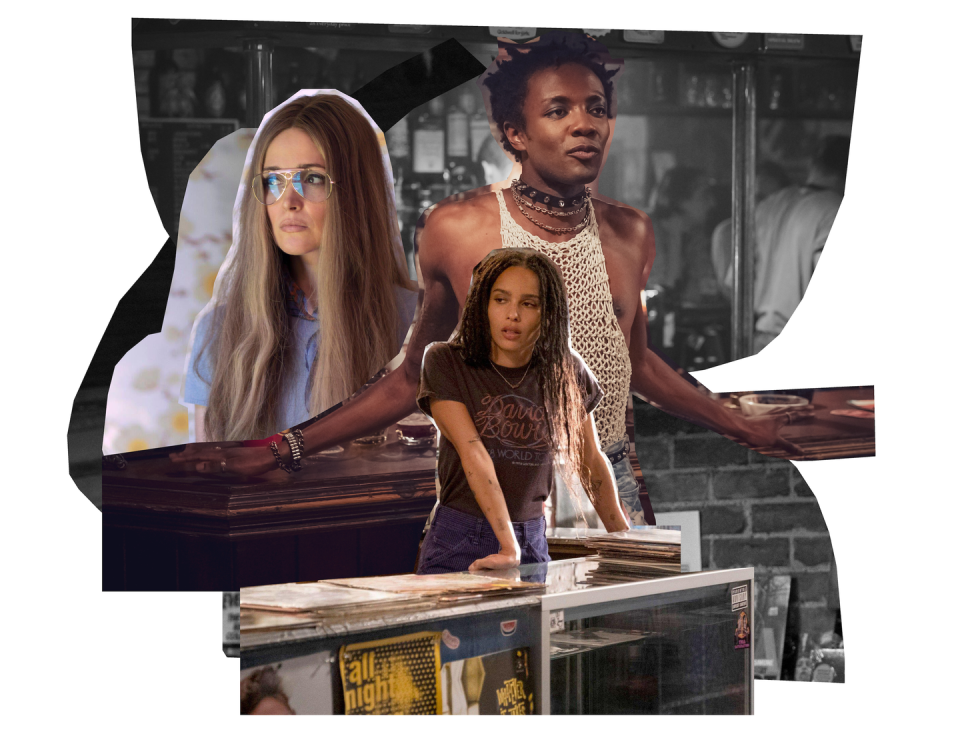
Not only are TV shows serving up inspiration when it comes to style, audiences are able to immediately react, simply opening a new tab to add similar pieces to their wardrobes.
‘People are shopping off the back of these episodes. That’s a fact,’ says Shiona Turini, a fashion stylist-turned-costume designer currently working on Issa Rae’s Insecure.
And she’s right. Lyst, a fashion number-crunching platform that tracks the product searches of more than 100 million people worldwide, reports that TV style is influencing shoppers like never before, driving us to buy the styles featured on screen in droves. Unlikely ones, too, with no direct link to catwalk trends.
For example, Lyst searches for the Kangol hat worn in Emily In Paris shot up 342%. As did searches for corsets, with 123% more people investing off the back of Bridgerton. La Perla also reports a 135% increase in searches for corsets compared to last year – at a time we’re all allegedly living in tracksuits and pyjamas.
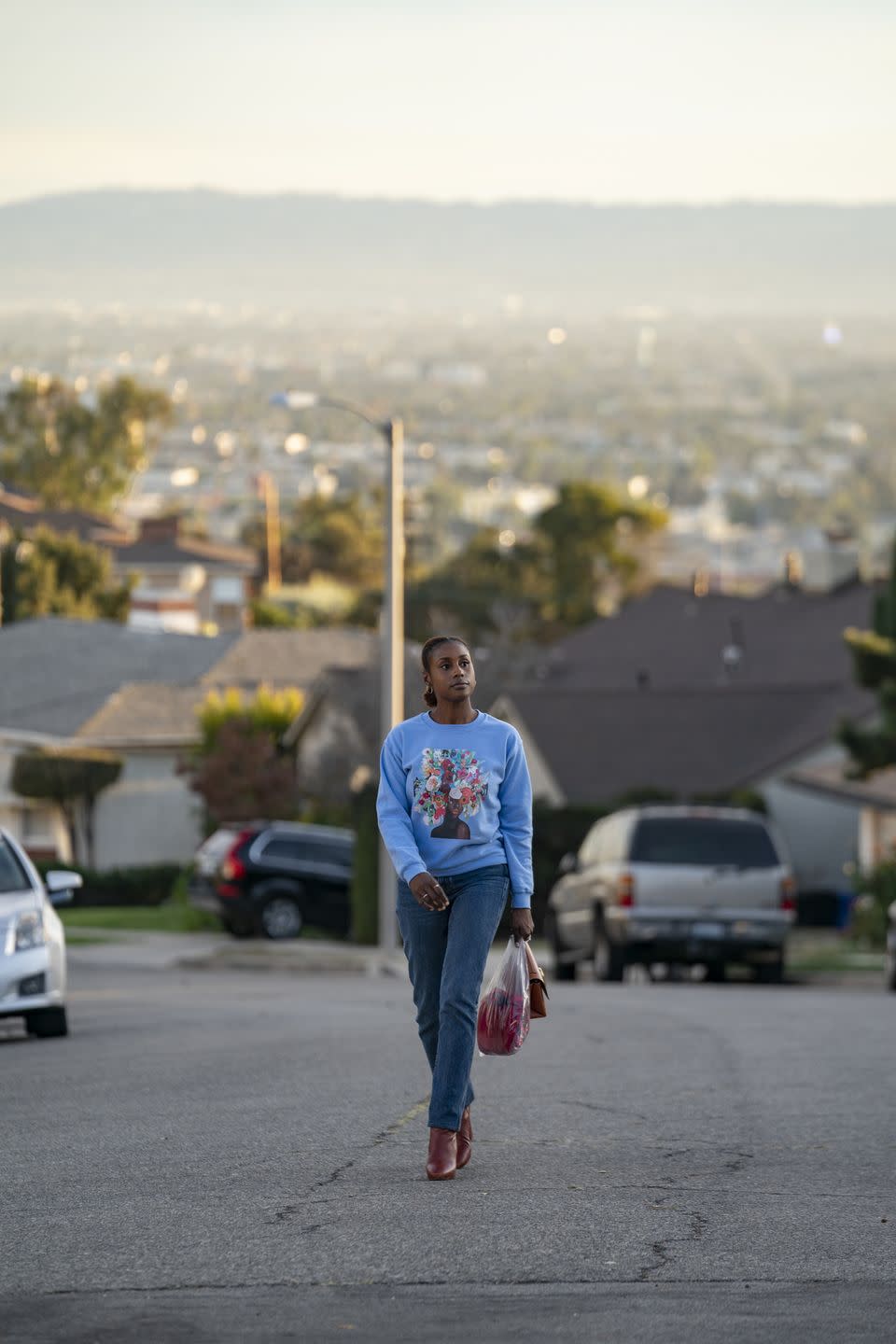
‘When an episode airs live I’m tagged in “Get the look” posts on social media before it even ends,’ says Turini, which itself makes it easier to search for and buy the styles on screen. She adds that the exact Dior Book Tote that was carried by Molly in season four of Insecure, retailing at a whopping £2,550, was trending on Twitter immediately after that episode dropped.
This is not entirely a product of the pandemic – we’d already fallen for Jodie Comer wearing Molly Goddard as Villanelle in Killing Eve, and taken inspiration from Shiv’s slick Succession wardrobe. But, over the past year, TV has connected us, inspired us and got us talking more than any other cultural medium.
‘Even my mum has Netflix now, and she used to only watch three channels,’ says Rachel Walsh, costume designer for The Serpent, which landed on BBC iPlayer in December. All eight episodes were available to gobble up in one drop, rather than airing weekly, which helpfully sated our newly ignited appetite for its Seventies style. Walsh has been in the business for more than 20 years, and was shocked by the rush of requests for comment and clothing credits from media outlets after the first episode of The Serpent aired on New Year’s Day on BBC One .

‘Twenty-odd years ago, film was the pinnacle of the industry, and TV was like its poorer cousin,’ Walsh explains. Today, high-profile film actors and directors – including Sir Steve McQueen, Luca Guadagnino and stars such as Nicole Kidman, Meryl Streep and Jodie Turner-Smith – who appears in Anne Boleyn, airing later this year – increasingly turn their hands to television. They are attracted by its growing audience, and the opportunity to stretch their creativity across eight hours, rather than 120 minutes.
‘Costume designers who would have only ever done big films are now designing for TV series on Netflix.’
As Seen On Screen
Meanwhile, our post-pandemic lifestyles have radically changed and, with that, so have our wardrobes. We’re increasingly attuned to the seductive styles on screen, because they vicariously feed our appetite to dress up while we watch at home, reclined on our sofas in Ugg slippers and loungewear. Walsh, whose recent credits include The Royals, starring Elizabeth Hurley as a wiggle dress and diamond-obsessed queen, and Temple, with Carice van Houten and Mark Strong decked out in The Vampire’s Wife and Belstaff, understands the allure of visually seductive style.

‘It’s part of the appeal. If I think of shows I’ve loved, such as Channel 4’s The Great, the clothes are so beautiful and sumptuous, with incredible shapes and rich jewel tones.’
And experiencing fashion through a screen, rather than on the pages of a magazine or out in the wild is how, today, we are all most comfortable. Press pause on any one of the buzzed-about TV shows of the past 12 months and you’ll frame an Instagram-ready tableau where clothes, styling, background and character all work in a happy symbiosis.
The ‘look’ is perfectly curated, and the colour palettes that we see – from The Dig’s muted, earthy neutrals, to Bridgerton’s candyfloss fake florals or The Queen’s Gambit’s chessboard chic – becomes a tasteful addition to the living room into which such shows are beamed.
It’s also smart thinking on the producers’ part. Before social media, TV chat was watercooler only. But these days, we’re all potentially self-published critics via our channels. With more conversations happening, we need more to talk about: why not make the costumes a storyline in their own right? The ‘Is it “so wrong it’s right”, or just plain wrong?’ debate about Emily Cooper’s wardrobe in Emily in Paris occupied more of my mind and post-binge dissection than anything to do with the plot. (Which was what, exactly?)

For The Serpent, Jenna Coleman was bedecked in a mix of real vintage and copycat styles (multiples made for continuity and stuntwomen) inspired by those found in original magazines from the Seventies – Paris Match and international editions of Vogue. The look was lowkey glamour in a sunset palette, with vintage Van Cleef & Arpels sunglasses, Studio 54-style jumpsuits, turquoise tailoring, and secondhand Celine bags from a market in Bangkok’s Chatuchak, where most parts of the show were filmed. All were styles that audiences were keen to add to their online baskets.
The Fine Details
So, what’s the secret to the success of the past year’s TV style hits? Striking the balance between fantasy and reality, according to both Turini and Walsh.
‘You want it to look really stylish, but real,’ Walsh says, particularly when it comes to outfitting an era like the Seventies. ‘You don’t want it looking like Austin Powers.’
That believability has a narrative function, of course, allowing us to connect with the characters on screen more easily. But it also makes the styles we see more relatable; the element of fantasy in shows like The Queen’s Gambit seem a little more within reach, because pieces like the checkered Miu Miu-style coat worn by the main character is just a click away on Net-a-Porter, or easily sourced secondhand on eBay (one of the sites that Walsh often scours for inspiration).
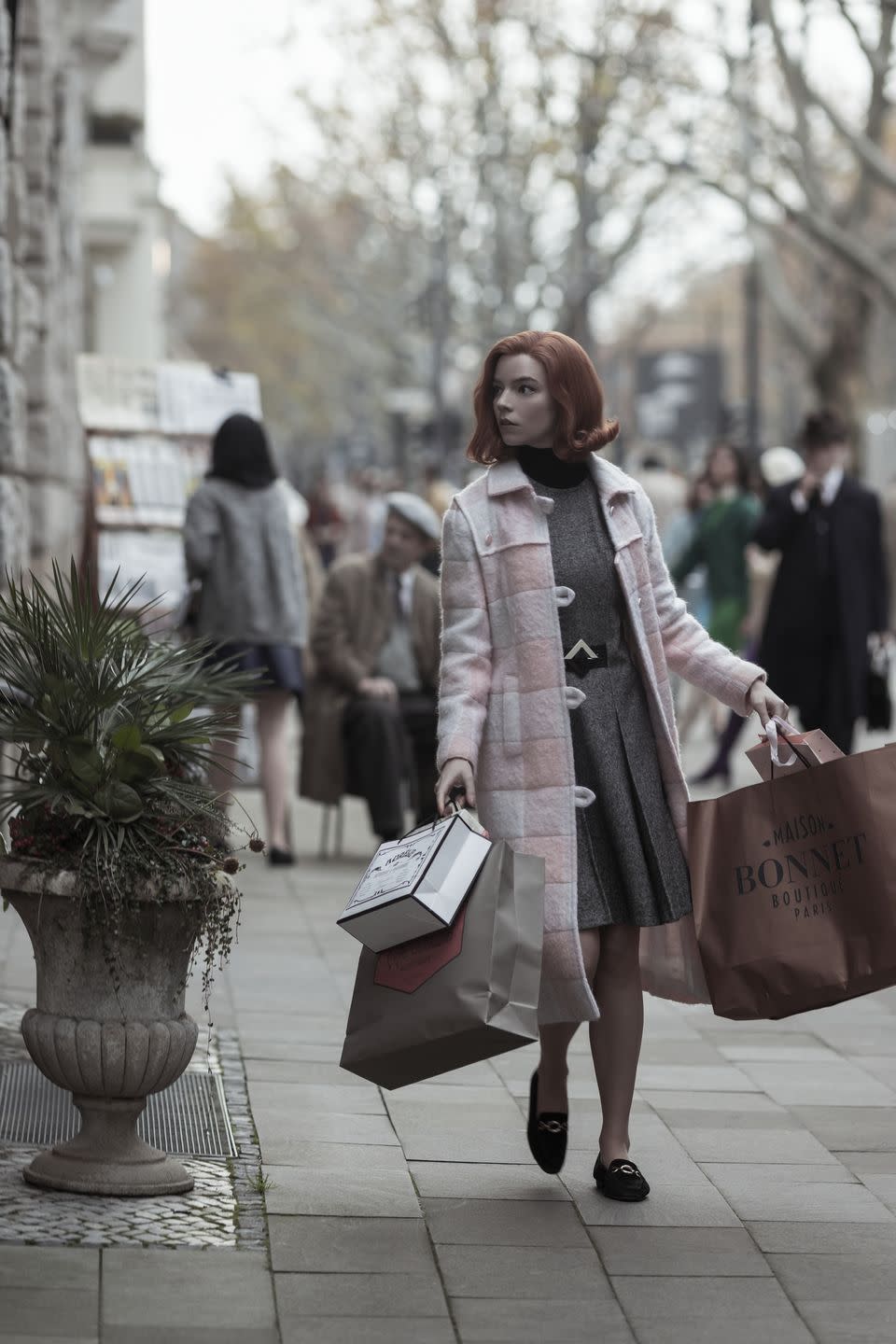
‘As much as I want to push the envelope for TV, I have to look at styling differently when I’m working on a fashion editorial or music video, where anything goes, just so looks are more rooted in reality,’ Turini says.
She began her career in the fashion industry, working as a stylist and editor at W magazine and Carine Roitfeld’s CR Fashion Book, before collaborating with musicians including Beyoncé and Solange Knowles. Her transition into costume design marks an interesting, broader shift in the entanglement between style and TV: the growing appetite for the fashion industry to be part of the action, capturing our attention as we spend 40% of our waking hours consuming TV.
This isn’t wholly new. who remembers that ASOS was originally called As Seen On Screen – a place to buy cheap copies of TV, film and award-show outfits? But as audiences become more gripped by the captivating costumes on screen, established fashion brands are becoming more aware of the power of being a part of characters’ wardrobes, establishing relationships with TV shows.
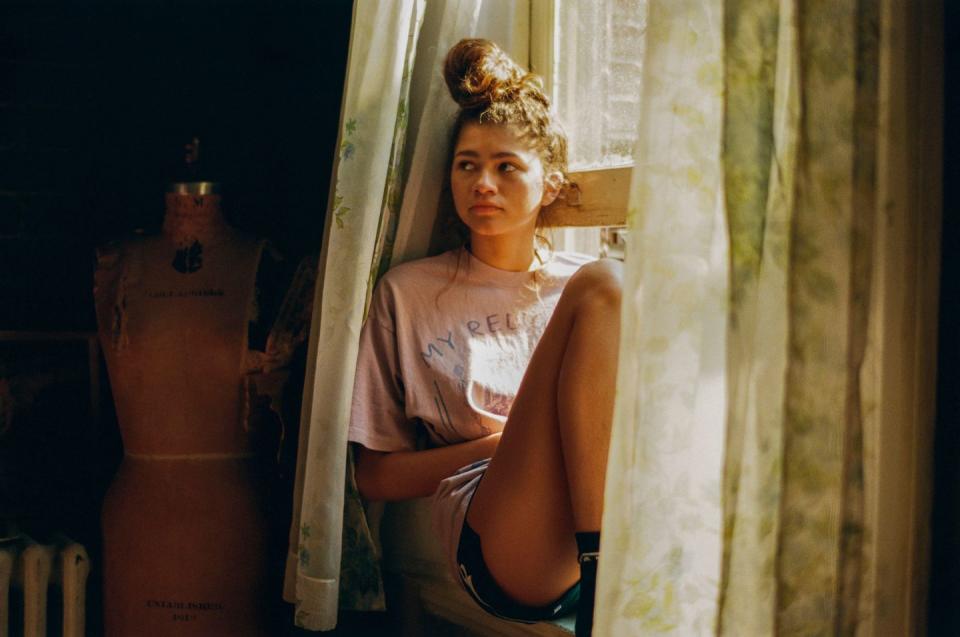
‘I’ve found that more brands have been reaching out this season,’ says Turini. Walsh agrees.
A Collaboration Of Art
For both fashion brands and TV producers, partnering to produce compelling costumes can prove financially lucrative; a show’s most-stylish scenes have the potential to attract a huge amount of press. That’s why the British Fashion Council partnered with Netflix for the launch of Bridgerton in January, inviting three fashion design graduates to produce Regency-inspired garments, modelled by stars of the show, much to the delight of a suddenly Bridgerton-obsessed social media audience. That kind of visibility is valuable at a time when Covid-19 has put a temporary stop to red carpet spectacles and international fashion weeks – the typical ways designers and brands can ensure their clothes get seen.
‘Brands are having to think of other ways to reach a wider audience and promote their product,’ Turini says.
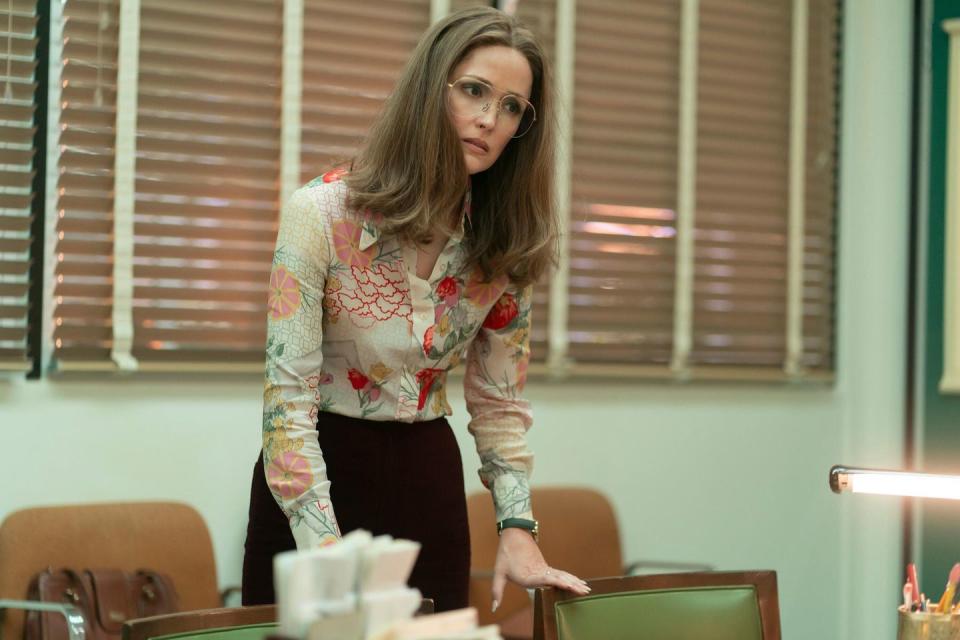
And that’s why we may see more fashion stylists enter the TV space. While costume designers traditionally operate separately to the fashion industry, not tied to brands or real-time trends, it’s the purview of fashion stylists to establish relationships with brands, making sure they feed the fantasy thought up by major labels, who are often the advertisers keeping magazines in business. In short, it’s part of their remit to make brands’ styles appealing: it boosts their bottom line.
‘Because I have an editorial background, I have long-standing relationships directly with brands and designers, so have been able to work with those I’ve been working with for the past 10 years to create something special,’ Turini says.
This will have an impact on the role of the traditional costume designer, too.
‘Lots of costume designers are having to learn how to style. And I’m one of them,’ says Walsh. She’s aware of the appeal of enticing audiences with contemporary brands, such as The Vampire’s Wife, which Walsh featured in Sky’s medical crime drama Temple.
The fashion industry’s increased appetite is inevitably upping the fashion credentials of some shows, and we’re seeing more ‘it’ styles with fashion industry buzz available to buy now: The Vampire’s Wife statement silhouette midi-dresses, the sell-out tote by New York-based designer Telfar Clements, branded candy-hued T-shirts by Versace, and covetable wrap dresses by brands such as Hungarian label Nanushka, whose styles are social media catnip.
‘It’s an exciting time to work in this field,’ Walsh says. For designers, too, who often find inspiration in on-screen style. Most recently, Jonathan Anderson was ‘so awestruck’ by Ratched, the Netflix drama series released in September 2020, he chose to unveil JW Anderson’s pre-AW21 collection on one of its stars, Sophie Okonedo. Given the boosted interest in screen style from both shoppers and the fashion industry, perhaps the next frontier of TV fashion is streaming services such as Amazon Prime – which already stocks a number of clothing brands, from Mango to Michael Kors – making its Original series shoppable.
It’s surely only a matter of time before we’re able to click ‘add to basket’ for a character’s outfit without even opening a new tab, and see more designers citing TV as inspiration.
‘The shows are powerful,’ says Turini. ‘They definitely have the power to impact trends.’ So, forget the front row, and stake your place firmly on the sofa: the new season of Fashion is about to begin and (spoiler alert!) you won’t want to miss it.
This article appears in the May issue of ELLE UK.
Like this article? Sign up to our newsletter to get more articles like this delivered straight to your inbox.
In need of more inspiration, thoughtful journalism and at-home beauty tips? Subscribe to ELLE's print magazine today! SUBSCRIBE HERE
You Might Also Like

 Yahoo Movies
Yahoo Movies 
